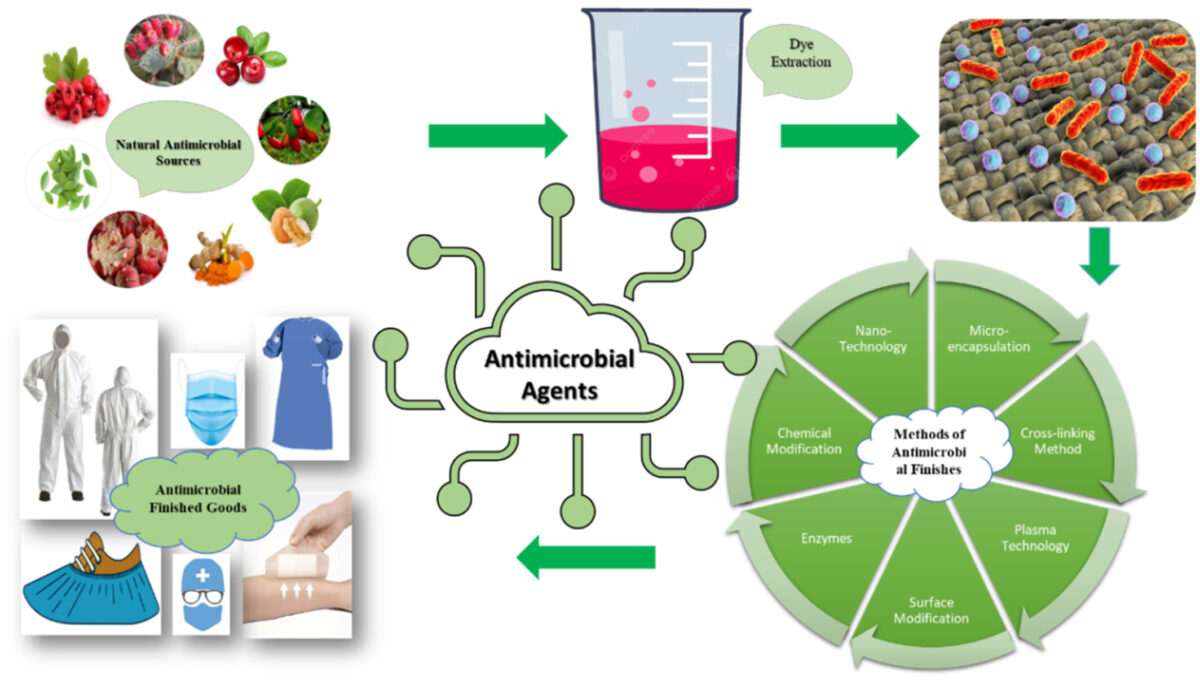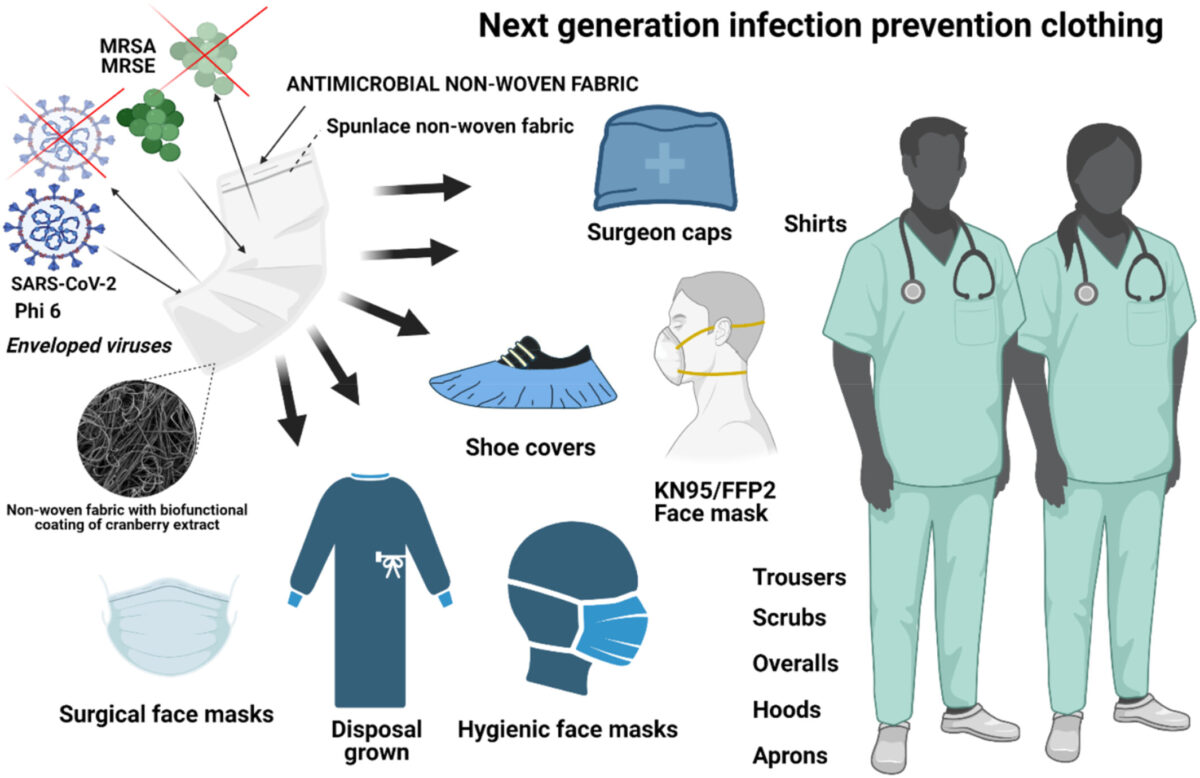Eco-friendly Natural Antimicrobial Agents in Textiles

In the face of escalating environmental challenges, the textile industry embraces a transformative shift towards sustainability.
Natural compounds from plant extracts, essential oils, and microbial by-products are becoming recognized for their potent antimicrobial properties. Unlike traditional chemical agents, these natural substances effectively combat pathogenic microorganisms. Additionally, they align with eco-friendly practices, offering dual benefits. This shift addresses environmental concerns and represents a step towards greener textile processing methods.
This review delves into the burgeoning field of natural antimicrobial agents as a sustainable alternative to conventional chemical treatments, which have historically posed significant environmental hazards.
Enhancing Fabric Performance
Integrating natural antimicrobial agents into textiles offers numerous functional benefits. These agents enhance fabrics’ durability and wash resistance, ensuring that the antimicrobial properties are maintained even after repeated washes. Moreover, they do not compromise the environmental integrity of the materials, making them an attractive option for sustainable textile production. The review highlights that using these natural agents can reduce allergic reactions and skin irritations, which are commonly associated with synthetic antimicrobial treatments.

Natural antimicrobial agents are revolutionizing the textile industry by providing eco-conscious solutions that cater to the growing consumer demand for environmentally responsible products. These agents not only enhance fabric functionalities but also promote sustainable practices throughout the industry. By adopting these natural solutions, the textile sector can reduce its reliance on synthetic chemicals, leading to a more sustainable and eco-friendly future.
The Resurgence of Natural Dyes
The introduction of synthetic dyes in the past century significantly diminished the use of natural dyes in the textile industry. However, the environmental and health issues associated with synthetic dyes have prompted a renewed interest in natural dyes. These dyes are celebrated for their biodegradability, minimal toxicity, and reduced allergenic potential, making them a cornerstone for developing textiles that are both safe and environmentally friendly.
Natural dyes offer more than just aesthetic appeal. They imbue textiles with additional functionalities, such as antimicrobial properties, insect repellency, and UV protection. This dual functionality not only enhances the performance of textiles but also contributes to more sustainable dyeing and finishing processes. The review notes that natural dyes, with their multifunctional benefits, are becoming increasingly popular for producing textiles, especially for medical applications where properties like biocompatibility and antimicrobial activity are critical.
Traditional dyeing practices using natural dyes involve mordants, typically metallic salts, which facilitate dye attachment to fibers but raise environmental and health concerns. The review emphasizes the need for sustainable dyeing practices, highlighting ongoing research into natural mordants as eco-friendly alternatives. These efforts aim to mitigate the adverse effects associated with conventional mordants and further promote sustainable textile production.
The Shift to Eco-Friendly Antimicrobial Agents
The integration of natural antimicrobial agents into textiles represents a significant advancement in sustainable manufacturing. These agents, sourced from renewable materials, enhance the durability and functionality of textiles while significantly reducing environmental impact. This transition aligns with global efforts to foster eco-conscious consumer behavior and decrease the carbon footprint of the textile industry.
As the textile industry moves towards a more sustainable future, the adoption of natural antimicrobial agents marks a critical milestone. These innovations not only ensure public health but also support a harmonious coexistence between industry and the environment. This shift towards environmentally friendly solutions exemplifies the industry’s commitment to enhancing consumer products while preserving our natural world, paving the way for a more sustainable and accountable future in textile production.
By focusing on natural antimicrobial agents and sustainable dyeing practices, the textile industry can significantly reduce its environmental footprint, meeting the rising consumer demand for eco-friendly products. This transition represents a promising step towards a more sustainable and responsible future for the industry.
You can learn more about this topic in the May issue of SPE Polymers. The paper, “Advancements of eco‐friendly natural antimicrobial agents and their transformative role in sustainable textiles“, written by Md Monir Hossain, Tarikul Islam, M. Abdul Jalil, Sheikh Md Rakibuzzaman, S. M. Surid, Md Riad Ibne Zabed, Amit Talukder, Shahin Hossain, was first published May 9, 2024.
